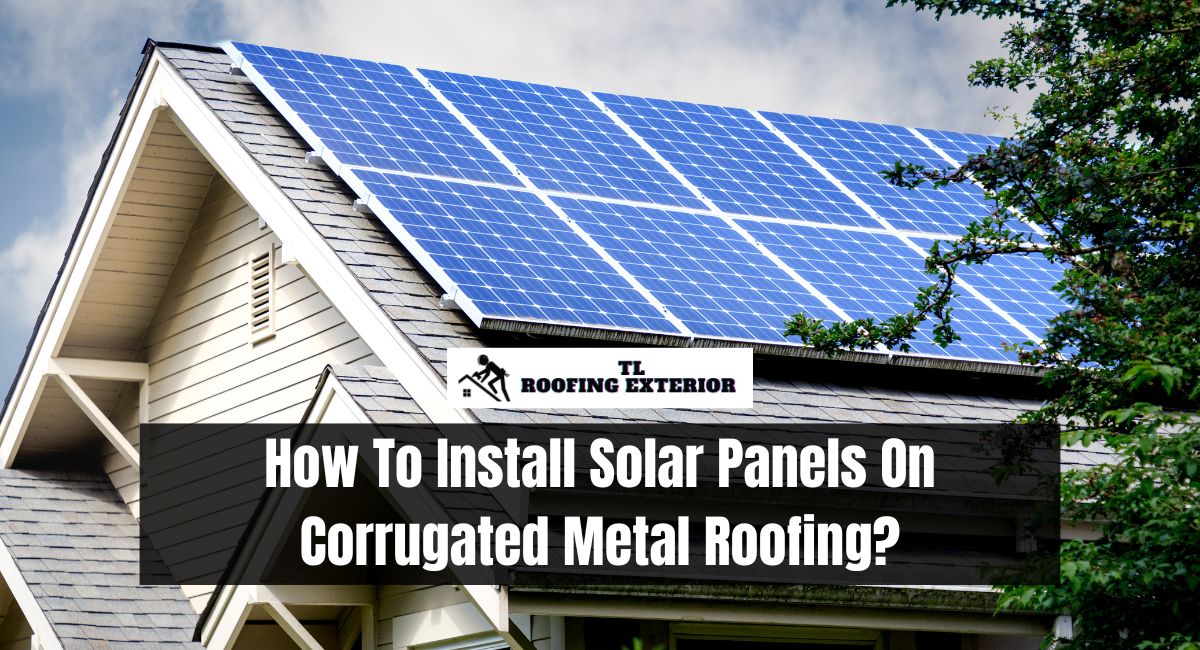Solar panels are an excellent method for harnessing renewable energy, reducing electricity costs, and promoting environmental sustainability. While their installation on conventional roofing materials such as asphalt shingles is relatively simple, corrugated metal roofing presents its own challenges and opportunities.
Corrugated metal’s unique shape and material properties necessitate special installation considerations to ensure its security and effectiveness.
This article will walk you through the essential steps and best practices for installing solar panels on corrugated metal roofing, enabling you to maximize both technologies.
Can You Install Solar Panels On Corrugated Metal Roof?
Yes, solar panels can be installed on a corrugated metal roof. In fact, due to their durability and longevity, metal roofs are often regarded as ideal for solar installations. For corrugated roofs, specialized mounting systems are available that either clamp onto the metal ridges or are affixed through the roof into the supporting structure.
To ensure appropriate weight distribution and avoid compromising the integrity of the roof, it is essential to consult with professionals. Always examine local building codes and regulations prior to beginning construction.
How To Install Solar Panels On Corrugated Metal Roofing?
Installing solar panels on corrugated metal roofing can be a complex task that requires careful planning & execution. It’s highly recommended to consult with professionals for both the solar panel system design and installation. However, if you’re interested in understanding the general process, here’s an overview:
Preliminary Steps
- Assessment and Planning: Consult with a solar energy specialist to evaluate your energy requirements, roof condition, and local building codes. This will help you determine the size and layout of your solar panel system.
- Permits: Obtain all required permissions from the local construction department. Typically, this necessitates submitting installation plans for solar panels.
- Materials: Obtain the solar panels, inverters, and mounting hardware for them. Ensure that the mounting hardware is designed specifically for corrugated metal roofs.
- Safety: Ensure that you have all the required safety equipment, including harnesses, mittens, and eye protection.
Installation Steps
- Locate Rafters: Identify the rafters beneath the corrugated metal roof. These will function as the mounting hardware’s anchor points.
- Mark Mounting Points: Once the rafters have been identified, mark the locations where the mounting brackets will be installed. Ensure that these locations align with the solar panel layout.
- Pre-Drill Holes: Drill holes into the marked locations ahead of time, making sure to drill through the metal and into the rafters. Use a drill tool designed for metal for this.
- Install Mounting Brackets: Using the appropriate screws or bolts, attach the mounting brackets to the pre-drilled openings. Ensure that the brackets are firmly attached to the rafters. Use rubber seals or a sealant to prevent water from leaking through the gaps.
- Attach Mounting Rails: After the brackets are installed, affix the mounting rails to them. The solar panels will be mounted to these rails.
- Grounding: The mounting system must be properly grounded in accordance with local electrical codes & manufacturer guidelines. Typically, this requires connecting a grounding wire to the mounting rails.
- Install Solar Panels: Carefully place the solar panels onto the mounting rails and secure them with the included hardware. Ensure that they are firmly attached to prevent any movement.
- Electrical Connections: Using the proper wiring, connect the solar panels to the inverter. Observe the manufacturer’s instructions and local electrical codes. A licensed electrician should carry out this action.
- Inverter Installation: Install the inverter in a location that is readily accessible and close to your home’s electrical panel. The inverter must be connected to the electrical circuit.
- Testing: Once everything has been installed, the system must be tested to ensure that it generates power as expected. This should be performed by a qualified expert.
- Final Inspection: Schedule a final inspection with your local building department to ensure compliance with all local codes and regulations.
Important Notes
- Waterproofing: Ensure that all penetrations are adequately sealed to prevent water leakage.
- Professional Help: Given the complexity and risks involved, it’s highly recommended to hire professionals for both the design & installation of your solar panel system.
- Warranty: Make sure that the installation process complies with the terms of any warranties for your roofing and solar panels.
By following these general steps and guidelines, you can install solar panels on a corrugated metal roof. However, due to the complexity and potential risks involved, professional installation is strongly recommended.
Conclusion
Solar panel installation on corrugated metal roofs is a specialized endeavor that requires meticulous planning and execution. Each stage is essential to the installation’s success, from choosing the proper mounting system to assessing the load-bearing capacity of your roof.
Despite the fact that do-it-yourself enthusiasts may be tempted to tackle this endeavor, it is often best to consult with professionals to ensure optimal performance and safety.
Check Out: What Gauge Metal Is Best For Residential Roofing?
